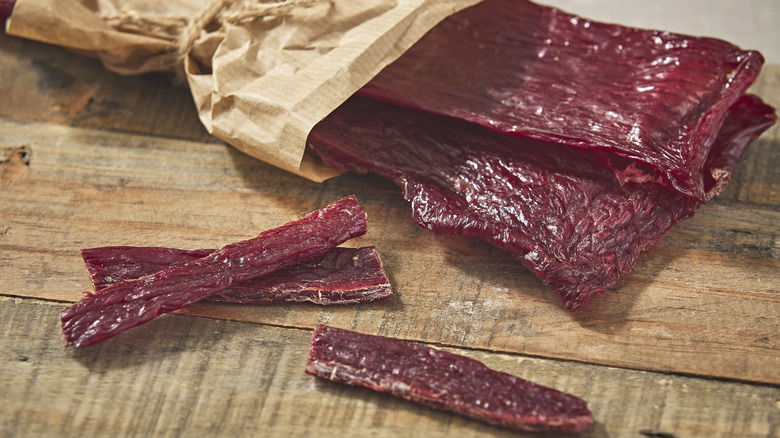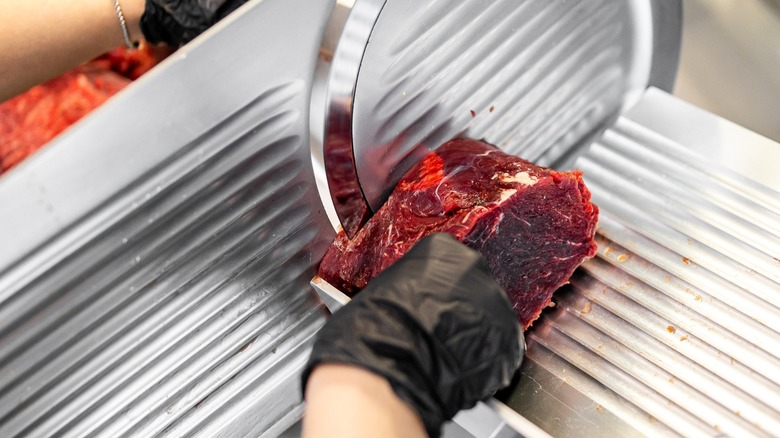Here's How To Slice Beef For Jerky Like A Pro
We may receive a commission on purchases made from links.
As far as snacks go, few deliver the umami-packed protein infusion that beef jerky brings to the table. Yet, any fan of the dehydrated meat knows that this savory bliss in a bag comes at a premium cost. Putting one measly bag of expensive beef jerky in your grocery cart stings if you're shopping on a budget. The simplest solution to have it on demand is to make it at home. However, if you make mistakes when preparing homemade beef jerky (like slicing it incorrectly), you may end up with something more akin to depressing beef crackers. To ensure we never have to endure the disappointment of dry, brittle beef jerky again, we sought the advice of Jon Urbana, the founder of KOW Steaks.
"For the best texture," Urbana told The Takeout. "Start with a good cut of meat, slice it thin across the grain, and watch it carefully so it stays slightly pliable." Eye of round is a good cut for beef jerky enthusiasts. In fact, most lean cuts (like top round) will do the trick. Still, whichever you end up with, slicing against the grain is crucial. "This shortens the fibers, making the jerky more tender and easier to chew."
Carving it the wrong way is a mistake that can't be undone. "Cutting with the grain leaves long fibers, which makes the jerky tougher," Urbana said. But what exactly does going against the grain look like in practice? "Slicing against the grain means cutting across the muscle fibers rather than along them," he explained. "To make sure you're cutting correctly, look for the lines running through the meat and slice perpendicular to them."
Slicing beef jerky is a breeze with the right tools
Identifying the direction the grains are running on a cut of beef is the first step when carving it for jerky, but the size of those slices can make or break this savory snack. Thin to win is good to keep in mind. The beef should be no thicker than ¼ inch, but ⅛ inch thick is even more ideal. Slicing meat that thin can be tricky, but thankfully, Urbana had some tips to simplify the process.
The primary dilemma with cutting meat thin is that the protein tends to wiggle around under your blade, which can result in uneven pieces. Urbana's solution to this problem is about as easy as it gets. "Putting the meat in the freezer for 30 to 60 minutes beforehand keeps it firm and makes it much easier to slice cleanly," he said. Of course, even with unyielding beef, you'll want a blade that cuts through the meat effortlessly. "A deli slicer is ideal for even slices. But if you don't have one, a sharp chef's knife like a Korin works well."
Unless you relish the thought of sorting through each sliver of jerky after dehydrating to see which ones are actually done, uniform pieces are paramount and best achieved with a meat slicer. Considering how much time and effort it saves you (not to mention delivering uniform cuts of beef) it's well worth the cost.

